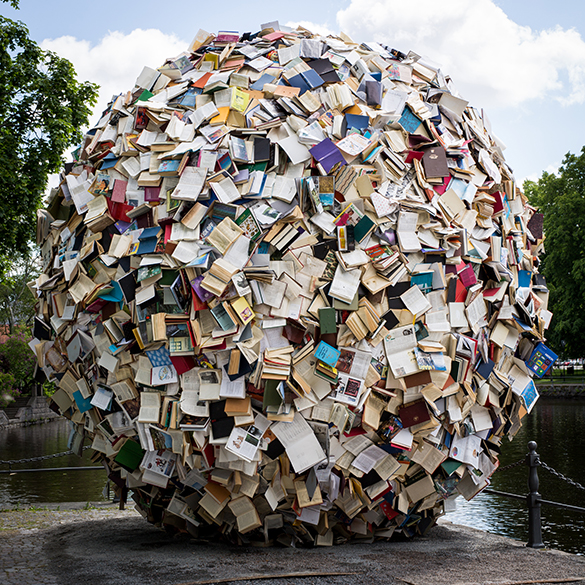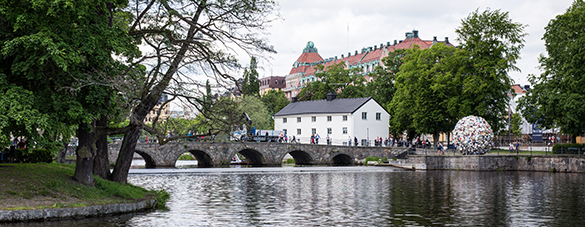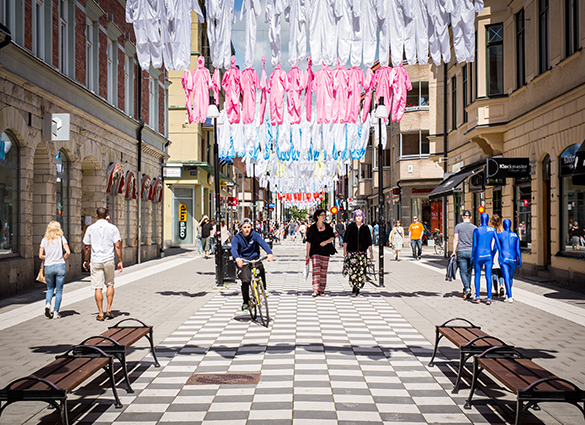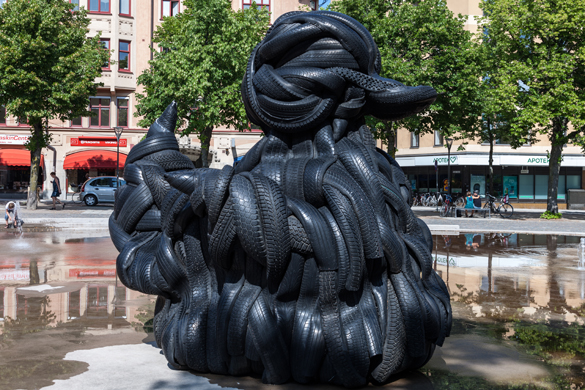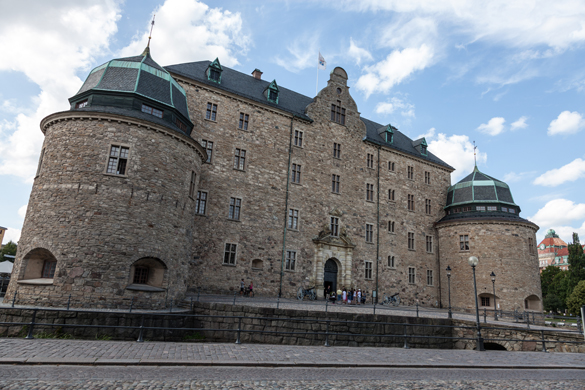This is a guest post by Claes Karlsson.
A huge ball of books? That’s what I stumbled upon on my way to work a few weeks ago!
“Conciencia” (Awareness), by Spanish artist Alicia Martin, is without a doubt one of the most popular items at this year’s OpenArt in Örebro. It evokes curiosity in old and young. People gather around and examine it minutely. The pages rustle and turn in the wind. Once close, I can smell that familiar scent of – ah, yes – the library stacks.
Google tells me that Alicia has attached thousands of books to a sturdy metal-core covered in chain-link fencing. Most of the books have been donated by the people of Örebro and the City Library (Örebro Stadsbibliotek). How clever!
Being a librarian, the installation makes me reflect on the cultural connection between the physical book and the library as an institution. At work, I am sometimes confronted with the assumption of the Holy (physical) Book. “Do you actually THROW BOOKS AWAY!? You’re kidding me, right?” Well… Purchasing thousands of new titles every year requires quite some space. But I always find the reaction interesting, suggesting that the physical book is something quite remarkable that people actually feel about, an artifact, or as Alicia puts it “Books represent consumption objects with a universal anthropological load that conveys knowledge – the book is, thus, the symbolic mirror of human culture.”
Alicia’s work also helps me remember the libraries of my childhood. Big buildings, tons of books and an incredible information retrieval system based of cards made of paper! Libraries today, on the contrary, contain both physical books and electronic resources, of which the latter continue to expand on the former’s expense. Maybe one day the physical book will be no more. Of course I wouldn’t dare saying that to my patron (fearing to burn in some kind of library hell!), but we actually survived moving from clay tablets and parchment rolls to the codex and the book.
While the book as a medium can be described as a simple conveyor of beautiful stuff (stories and knowledge, fiction and facts), I can’t help but thinking that the physical book really is a fantastic thing. No need to charge it. No need to update. No constant flow of notifications popping up, fragmenting the reading experience. Virtually no risk of hardware or software failure – just keep it away from fire! Adding to that, easy and efficient organization of bookmarks as well as an integrated seamless note-taking system by using another great invention – the pen. Surely an artifact that well designed won’t give in easily! Or maybe I’m just old. Books and e-books aside, Alicia Martin’s “Conciencia” is my favorite piece of OpenArt 2015. Go see it. It’s brilliant.

